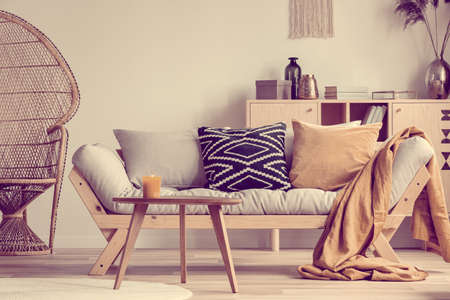Understanding Sustainable and Ethical Textiles
The movement towards sustainable and ethical textiles is reshaping the landscape of UK interiors, reflecting a growing awareness of environmental stewardship and social responsibility. At its heart, sustainability in textiles refers to practices that minimise negative environmental impacts throughout a product’s lifecycle—from raw material sourcing through production, usage, and eventual disposal or recycling. Ethical textiles, meanwhile, encompass considerations for the well-being of workers, fair trade principles, and transparency within the supply chain. In the UK context, these principles are guided by a range of standards and certifications such as the Global Organic Textile Standard (GOTS), OEKO-TEX®, and Fairtrade accreditation. These frameworks ensure materials are produced with reduced chemical use, water conservation, fair labour practices, and traceable origins—elements increasingly valued by British consumers. Understanding these definitions is crucial for anyone looking to create interiors that not only look beautiful but also embody eco-friendly comfort aligned with contemporary British values.
2. From Farm to Fabric: The Journey of Eco-friendly Materials
The story of sustainable and ethical textiles in the UK begins long before a cushion graces a Georgian townhouse or a wool throw warms a modern flat. It starts on British farms, in fields and pastures where eco-friendly fibres are cultivated with care for both land and community. Understanding the journey from farm to fabric is key to appreciating their impact on both interiors and local culture.
Tracing the Lifecycle of Sustainable Fibres
Three fibres stand out in the UKs sustainable textile landscape: organic cotton, hemp, and British wool. Each carries a distinct heritage and ecological footprint, contributing to the unique character of British interiors.
| Fibre | Origin & Cultivation | Sustainability Credentials | Cultural Resonance |
|---|---|---|---|
| Organic Cotton | Grown without synthetic pesticides, often sourced from certified farms globally, but increasingly available from UK-based initiatives. | Reduces chemical runoff, promotes soil health, uses less water than conventional cotton. | Favoured in contemporary interiors for its softness; often seen in minimalist and Scandinavian-inspired British homes. |
| Hemp | Cultivated in small-scale UK farms; robust growth with minimal intervention. | Requires little water, no pesticides; fast-growing and improves soil structure. | Rooted in historic rope-making towns; now re-emerging as a symbol of eco-innovation in rustic and urban décor alike. |
| British Wool | Sourced from native sheep breeds across the UK’s uplands and lowlands. | Biodegradable, renewable, supports local farming economies. | A longstanding staple of British design, from tartan blankets to contemporary felted cushions; evokes heritage and homeliness. |
The Cultural Thread: Tradition Meets Modernity
Sustainable fibres are more than just eco-conscious choices—they are woven into the fabric of British identity. Organic cotton brings an understated luxury to airy city flats. Hemp reconnects modern dwellers with ancient crafts once vital along the Thames and Forth. British wool, meanwhile, remains an emblem of comfort and resilience, echoing through cottages in Cornwall to design-led apartments in Manchester.
Today’s interior designers draw on these materials not only for their environmental credentials but also for their ability to tell stories—of place, provenance, and pride. Each textile piece becomes an invitation: to touch history, support ethical practice, and anchor spaces in a sense of sustainable belonging.
![]()
3. Conscious Consumption: British Habits and Shifting Mindsets
Across the UK, a notable transformation is underway in the way people approach interior textiles. The British public is increasingly prioritising sustainability and ethics, moving beyond fleeting trends towards meaningful, responsible choices that reflect national values of quality and longevity. At the heart of this shift is an embrace of local production and transparency. Britons are demonstrating trust in established certifications such as the Global Organic Textile Standard (GOTS), Fairtrade, and the Soil Association’s organic mark. These labels, well recognised across the UK, serve as trusted assurances that home fabrics are sourced and produced responsibly—an essential consideration for consumers seeking both comfort and conscience.
The Allure of Vintage and Upcycled Textiles
Alongside new eco-friendly offerings, there has been a pronounced resurgence in vintage and upcycled fabrics within British interiors. Markets from Portobello Road to Glasgow’s Barras are alive with pre-loved curtains, throws, and cushions boasting unique heritage patterns—often with stories woven into their very fibres. Choosing these pieces isn’t simply about nostalgia; it’s a deliberate act against wasteful fast fashion. Many homeowners now mix antique linens or reupholstered armchairs with contemporary sustainable textiles, creating an interior aesthetic that feels both modern and rooted in tradition.
Local Trends Driving Change
British high streets and online retailers alike have responded to this cultural moment by broadening their ethical textile ranges. From John Lewis’ “Made in Britain” soft furnishings to independent boutiques specialising in locally spun wools or recycled cottons, there’s a growing ecosystem supporting conscious consumption. Social media campaigns such as #SecondhandSeptember further galvanise consumers to rethink their buying habits, fostering a sense of community around mindful shopping.
A Shift in Mindset
Ultimately, the move towards sustainable and ethical textiles within UK homes is as much about shifting mindsets as it is about material choices. By favouring quality over quantity, trusting transparent labels, and embracing the unique character of vintage or upcycled finds, British consumers are crafting interiors that embody both eco-friendly comfort and cultural resonance—a testament to the evolving landscape of conscious living in the UK.
4. Blending Ethical Textiles into Quintessential UK Interiors
The integration of sustainable and ethical textiles into British interiors is not simply a trend, but rather a nuanced evolution rooted in the nation’s deep respect for tradition and innovation alike. From the rustic warmth of countryside cottages to the urban elegance of London flats, eco-friendly fabrics are redefining comfort, style, and heritage throughout the UK’s living spaces.
Classic Meets Contemporary: A Tapestry of British Style
Sustainable textiles effortlessly complement traditional British design motifs, such as tartans, tweeds, and florals. In rural settings, organic linens and wool throws add tactile cosiness to stone fireplaces and exposed beams. Meanwhile, metropolitan homes adopt recycled velvets and plant-based silks for sleek sofas or minimalist drapes, maintaining modernity while respecting ethical principles. This seamless blend honours the past without compromising on contemporary aesthetics or environmental integrity.
Style and Comfort: A Delicate Balance
British interiors have long prioritised both comfort and refinement. Today’s eco-conscious materials deliver on both fronts: organic cotton cushions offer plushness without pesticides, while upcycled upholstery provides durability that stands up to family life or entertaining guests. The tactile richness of ethically sourced wool rugs or hemp-blend curtains contributes to a sense of sanctuary — all with a gentle footprint.
Heritage Reimagined: Sustainable Textiles Across Iconic Settings
| Interior Style | Traditional Elements | Sustainable Textile Integration |
|---|---|---|
| Country Cottage | Exposed beams, open hearths, floral prints | Organic linen slipcovers, undyed wool throws, recycled cotton curtains |
| Victorian Terrace | Ornate mouldings, bay windows, period colours | Fairtrade velvet cushions, plant-dyed drapes, bamboo flooring mats |
| Modern London Flat | Sleek lines, neutral palettes, open-plan layouts | Recycled polyester upholstery, hemp-blend rugs, ethically sourced leather accents |
This thoughtful integration ensures that whether one resides in a thatched-roof cottage in Cornwall or a glass-fronted apartment overlooking the Thames, sustainable textiles enhance both the authenticity and comfort of home. By weaving together heritage patterns with responsible production methods, UK interiors set a benchmark for eco-friendly living without sacrificing their unmistakable charm.
5. Challenges and Opportunities in the UK Textile Landscape
The journey towards sustainable and ethical textiles in the UK is not without its hurdles. While the appetite for eco-friendly interiors has grown, several barriers continue to slow widespread adoption.
Barriers to Sustainable Textile Initiatives
Cost Implications
One of the most significant challenges is the higher cost associated with sustainable materials and ethical production methods. Organic fibres, natural dyes, and fair labour practices inevitably drive up prices, making eco-friendly options less accessible for some consumers and smaller independent retailers.
Supply Chain Complexity
The textile supply chain is notoriously complex, often stretching across continents. Achieving full transparency and traceability is a daunting task, particularly when trying to ensure that every link in the chain meets ethical standards. This complexity can discourage local designers from committing fully to sustainable practices.
Consumer Awareness and Behaviour
While sustainability is a growing trend, there remains a gap in consumer understanding of what truly constitutes an ethical textile. Greenwashing—where brands overstate their environmental credentials—adds confusion, making it difficult for customers to make informed choices.
Emerging Opportunities for UK Innovators
Local Sourcing and Craft Revival
The push for sustainability offers a unique opportunity for British designers, artisans, and retailers to champion locally sourced materials and traditional craft techniques. By harnessing wool from British sheep or reviving heritage weaving methods, makers can create textiles with a distinct sense of place and story—elements highly prized by today’s conscious consumers.
Circular Economy Solutions
The rise of circular design principles—such as recycling, upcycling, and closed-loop manufacturing—is opening new avenues for innovation. Forward-thinking brands are exploring ways to turn waste textiles into new products or offer take-back schemes that extend the life cycle of soft furnishings.
Collaboration and Community
The landscape is ripe for collaboration between local councils, industry bodies, universities, and artisan collectives. Through joint initiatives—whether research projects or public awareness campaigns—the UK can foster an ecosystem where sustainable textile practices are not just possible but celebrated as part of British design identity.
The road may be challenging, but these barriers also catalyse creativity and resilience within the sector. For those willing to adapt and innovate, the future of UK interiors promises both eco-friendly comfort and cultural richness.
6. Practical Guidance: Choosing Eco-friendly Textiles for Your Home
Sourcing Ethical Fabrics in the UK
When it comes to integrating sustainable and ethical textiles into your British home, sourcing is key. Look for reputable UK-based retailers and brands that prioritise transparency and responsible supply chains. Trusted certifications such as GOTS (Global Organic Textile Standard), OEKO-TEX®, Fairtrade, and the Soil Association Organic mark are essential indicators of environmental responsibility and fair labour practices. Renowned British suppliers like The Natural Curtain Company, Offset Warehouse, and Green Fibres offer wide selections of organic cotton, linen, hemp, and recycled fibres suitable for upholstery, curtains, and soft furnishings. Local markets and artisan studios—especially those in eco-conscious cities like Brighton or Bristol—are also excellent places to find unique, small-batch textiles.
Caring for Sustainable Textiles
To extend the lifespan of your eco-friendly fabrics, adopt a mindful approach to care. Wash at low temperatures using gentle, biodegradable detergents and avoid harsh chemicals that can degrade natural fibres. Air dry whenever possible to reduce energy consumption, and mend minor damages promptly rather than discarding items. Many sustainable materials—such as pure wool or organic linen—naturally resist dirt and odours, so frequent washing is often unnecessary. Embracing these habits not only preserves textile quality but also aligns with the circular ethos underpinning sustainability.
Styling Tips: Blending Comfort with Conscience
Styling your interiors with ethical textiles doesn’t mean sacrificing comfort or aesthetics. Embrace the tactile richness of British-grown wool throws or handwoven flax cushions to evoke cosy, timeless elegance. Mix textures by layering chunky knits with smooth organic cottons or rustic hemp linens for visual interest. For a quintessentially British look, consider classic motifs—like checks or florals—in eco-friendly prints. Upcycling vintage fabrics sourced from local charity shops or markets adds both character and sustainability to your décor. Remember: thoughtful curation is more impactful than quantity.
Verifying Authenticity: What to Check For
Before purchasing, always check product labels for certification marks and traceability details. Many UK suppliers are transparent about their production methods; don’t hesitate to ask questions about sourcing or manufacturing processes. Ethical brands will be forthcoming with information regarding their materials’ origins and environmental footprint.
The Final Word
Selecting sustainable textiles for your UK home is both a design choice and an ethical commitment. By choosing certified materials from trusted British sources, caring for them mindfully, and styling with intention, you contribute to a greener future while enjoying everyday comfort steeped in local culture.


